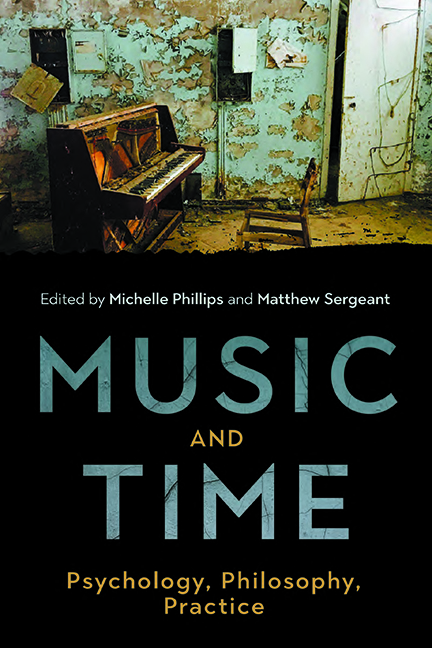4 - The Perceptual Present and the Philosophical Puzzle of Musical Experience
Published online by Cambridge University Press: 07 October 2022
Summary
The Philosophical Puzzle of Temporal Experience
Philosophical perspectives on time perception often make reference to the experience of music, and for good reason. Listening to a melody takes time, for the reason that melodies have temporal parts. Just as works of paradigmatic visual arts such as painting or sculpture are extended in space, musical works are extended in time. ‘Music’, as Jonathan Kramer puts it, ‘unfolds in time’. Consider hearing any sequences of notes, for example a broken A Minor chord. First one hears the A, then the C, then the E. The sounding of each note occupies a distinct temporal location. One hears the A only when A is played, C only when C is played, and E only when E is played. One way to put this is to say that one's auditory experience is restricted to the present. One hears only what is being played at the time of one's hearing. Indeed, in perceptual experience one seems to be aware of perceived events as present. The note that one hears seems to be happening now. In this respect, auditory perception differs from memory. In memory one is aware of events that occurred at a time before one's remembering of them.
These are truisms. Yet they come into apparent conflict with the equally obvious fact that in hearing the broken chord, we hear the progression from one note to the next. We hear, one might say, not only the notes but also the relations between them. These relations can be temporal – A occurs before C – or aesthetic – A harmonises with C. But if we can hear a relation between two notes, A and C say, surely we must, at that moment, be hearing both A and C. For presumably we could not hear the relation between A and C if we cannot hear the notes that are so related. But since A and C occur at different times, it seems that there must be a moment at which we hear what occurred at an earlier time. That, however, is inconsistent with the truism that we hear only what is played at the time of hearing.
- Type
- Chapter
- Information
- Music and TimePsychology, Philosophy, Practice, pp. 55 - 70Publisher: Boydell & BrewerPrint publication year: 2022



